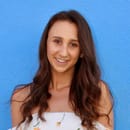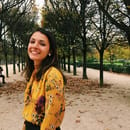Jennifer Gentry is a board-certified medical illustrator and professor in Wake’s Studio Art Department. This semester she’s teaching Design Studio: Visualization of Ideas which introduces illustration, typography, information design, and an iterative design process that translates complex concepts into compelling visual narratives. She also teaches courses that integrate digital tools with traditional practices such as drawing, painting, and book design.
Once an undergrad at Wake Forest, Jennifer candidly shares with Her Campus about her journey from a BFA program to a pre-med track and eventually to her work with breast prosthetics.
Her Campus: Tell me a little about yourself and your career.
Jennifer Gentry: My undergraduate degree is from Wake Forest where I was an art major and biology minor with a pre-med concentration. I transferred to Wake Forest after my freshman year in the BFA program at Carnegie Mellon School of Art. At Wake Forest, I was able to study art while investigating other academic interests and discover their connections. I have an MA from the Johns Hopkins University School of Medicine, where I studied medical and biological illustration, as well as anaplastology or somatic prosthesis design.
Following graduate school, I worked for Coloplast, a medical device company outside of Atlanta, designing soft tissue externally worn breast prosthetics, primarily for women following a mastectomy or lumpectomy. We developed the first mass-customizable breast prosthesis product bringing a traditional design practice of sculpting with clay and plaster into the digital realm.
I’ve also illustrated two aesthetic and oncoplastic breast surgery textbooks and contributed extensively to more than 15 other scientific and surgery books. My work includes illustration for over 20 academic journals as well as patient education, medical devices, pharmaceutical, marketing, legal exhibits, and web.
HC: What was the pivotal point in your life or career that convinced you to pursue art rather than medicine?
JG: The movement seems more of a gradual converging rather than a pivot. Art has always been there. Maybe the most pivotal point I can recall was midway through my first year of college in CMU’s BFA, when I suddenly became compelled to find a way onto a pre-medicine track. I’m sure that I was wrestling with these ideas under the surface of my consciousness before that point, but the idea emerged while in the shower–a great place to synthesize ideas.
Approaching my senior year at Wake, while I still planned on attending med school, I felt that graduate school would be better for me first. Because of what I was able to study simultaneously at Wake Forest, I had much of the science and art requirements for a medical illustration graduate program. I was following my academic interests somewhat independently of one another and they sort of converged in front of me. Medical illustration made perfect sense at that time, but I was not letting go of medical school. I thought of grad school as another step toward “something” rather than a means to an end.
By the end of graduate school, I realized that through illustrating medicine, I was working with my favorite parts of medicine. I also came to understand the great responsibility of working with patients and their lives and deaths. What I dreamed that medicine would be, fueled me through the roughest parts of preparation, but this dream was the vehicle that brought me to where I am now in my lifework.
HC: How did you get into breast prosthetics?
JG: Maybe just luck. Following grad school, my job as a breast prosthesis designer came at a time when the company happened to be looking for another designer. We created designs based on laser scans of a woman’s torso generating a custom prosthesis that fit better than a “standard” breast prosthesis. The idea was that this custom fit worked to disperse the weight of the prosthesis similar to the way that natural breast weight is distributed across the chest and to which minimized the amount of force on the shoulder from the bra strap and helped to prevent imbalance and back injury over time.
HC: What was your favorite part about working in that industry? What was fulfilling about it?
JG: I love the part about solving a problem for someone and offering a solution that serves their needs and brings happiness or satisfaction. I met many inspirational women who could laugh despite tragedy. I sat, listened, and cried with many women. Although these were some of the hardest parts, it made me happy to give them something that helped fill a need, to provide a little more balance both physically and perhaps, emotionally. I loved being able to work on an actual production factory floor, with engineers, computer programmers, machinists, etc. and then marketing and design firms, and test groups. I think studying art develops an ability to connect with whatever individuals, groups, information, tools, or materials are necessary to solve a problem.
HC: At what point did you decide to transition to medical illustrations and teaching?
JG: After several years of designing prosthetics, I decided to shift focus to medical illustration practice. When starting to illustrate full-time, to some degree, projects and subject matter I took on had to do with the jobs that were available or presented themselves. Eventually, I began working with a medical textbook publishing company on several projects illustrating for chapters in various books. Then, I was offered the opportunity to illustrate an oncoplastic breast surgery book where I worked with a wonderful art director who may have known about my previous work with breast prosthetics and my familiarity with breast anatomy. This led to illustrating another breast surgery book, which led to creating illustrations for a highly respected and prolific researcher and breast surgeon, which then led to more breast surgery projects, and I hope more in the future.
I moved back to Winston-Salem to be near family for what I thought would be a temporary amount of time–that was 15 years ago. I began teaching oil painting and digital art courses as an adjunct assistant professor which has evolved into my roles today.
HC: What’s next? Do you anticipate any changes in your career or are you happy where you are?
JG: I plan to keep teaching, illustrating art and design, and to find ways to fuse the two on as many levels as possible. I always seek new and exciting illustration projects. I will continue to communicate how important it is for most everyone to study art, design, and visual communication; it will serve students well throughout their chosen career and challenges that they will face in this ever-changing world.
HC: What advice would you give to a student interested in an art-related career?
JG: Your choice to study art is a good one! Study art as a way to think and learn about the world. Through making art, you are practicing leadership, developing original ideas, and learning to communicate in a variety of ways visually. Properly embraced, you develop tenacity, flexibility, confidence, and resilience. There is great value in being able to work in the “unknown” while believing there is a solution that you have the power to discover.
To learn more about Jennifer Gentry, check out her website www.gentryvisualization.com.



